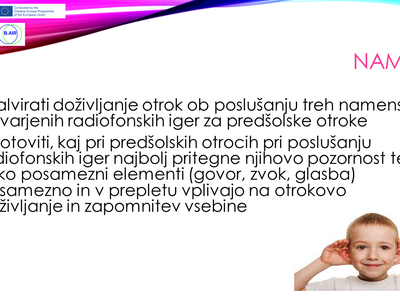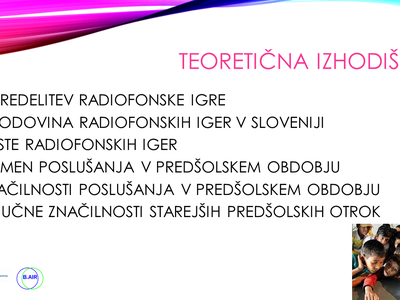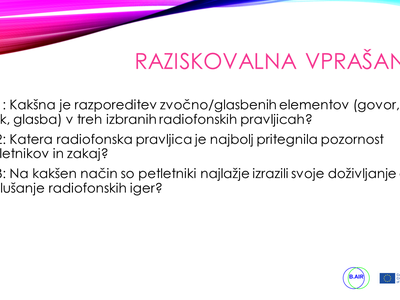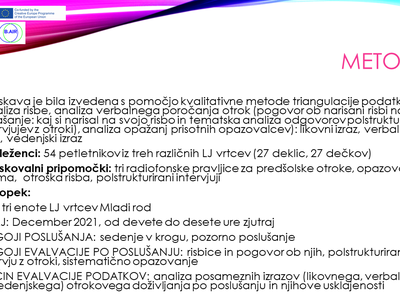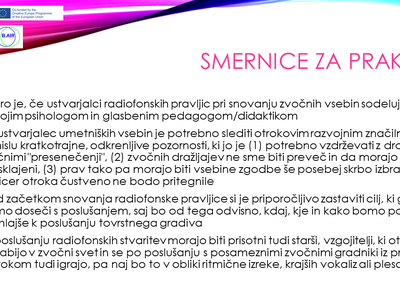We presented the research we conducted as part of the international B-AIR project in cooperation with Radio Slovenia. Our research focused on how preschool children perceive artistic audio material, radio fairy tales, and how they can be invited to engage with art through them. We wanted to find out what artistic elements of the radiophonic material enable children to have an aesthetic experience and thus enter into a deeper artistic experience of reality and, through it, develop a sense of security, sensitivity, and inner focus. For this research, three radio fairy tales were created for preschool children. Each of them had a specific structure of basic elements (sound, speech, music, rhythm, metre) and also the relationships between these elements (one element in the foreground or the background, the equal interplay of elements and transition into each other, layering of sound levels and different complexity of the soundscape). The fairy tales were evaluated by playing a specific fairy tale to 53 five-year-old children from three kindergarten groups in Ljubljana over two consecutive weeks. During the listening sessions, three appropriately trained observers were present in each group and made anecdotal notes about the observations. The children drew the story after listening and had a short conversation with the observer. Results, which were obtained through data triangulation of qualitative analysis – children’s drawings and interviews, and anecdotal records of observers – led us to the following important conclusions: 1) Children find listening to audio narratives challenging and need to be specially prepared for this activity, provided with a safe environment and contact with an adult. 2) The dynamics, rhythm, and dialogic nature of the story are key to maintaining children’s attention. 3) Fairy tales where the individual elements are equally interwoven with each other have a much stronger impact on the child’s experience.
Zadnik Habe Kompan 2022 How do children hear the arts - Book of Abstracts, november 2022
How do children hear the arts when the arts hear children _ppt presentation_SYMPOSIUM 2022

